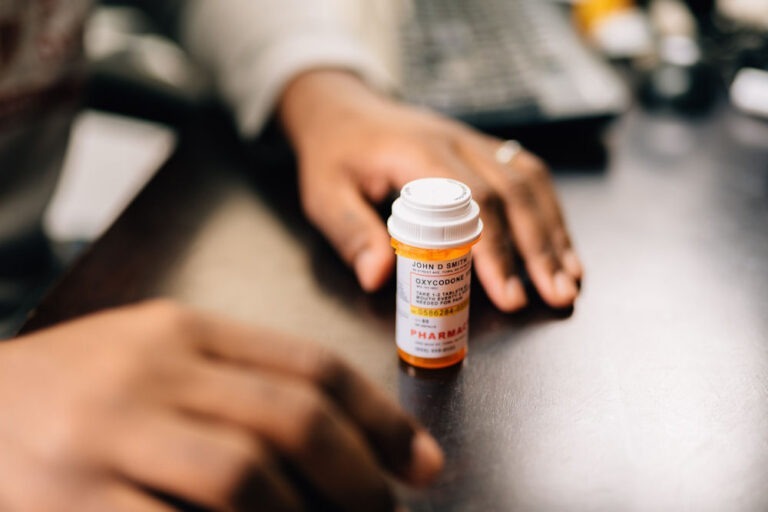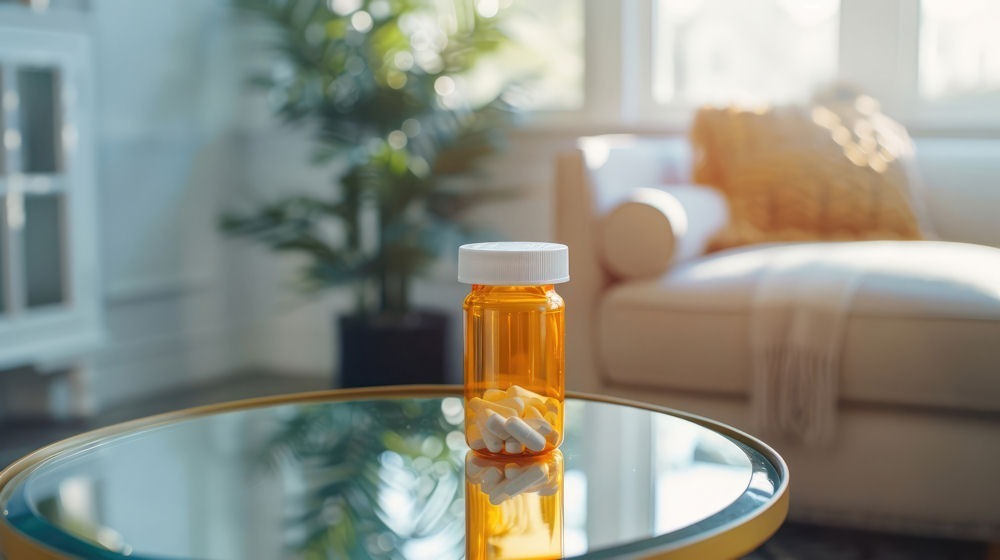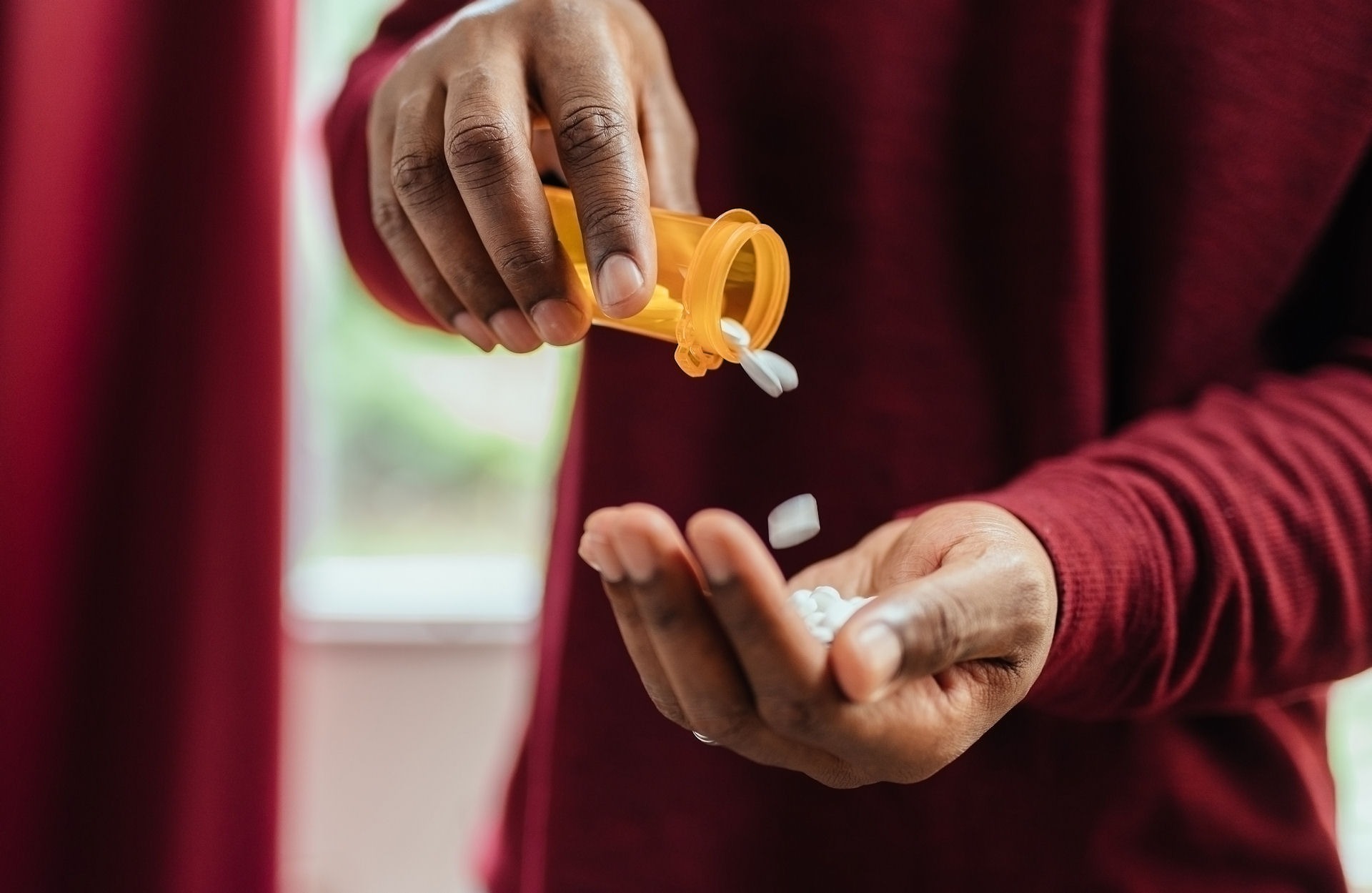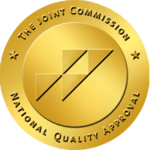The difference between opiates and opioids is how they are made.
Although the terms “opiates” and “opioids” are often used interchangeably, there is a difference. While some people are careful to distinguish between the two, others do use them
interchangeably, and recently, many people tend to refer to both of these drugs as “opioids.”
Both are used medically for:
- pain relief
- anesthesia
- cough suppression
- diarrhea suppression
- treatment of opiate/opioid use disorder
Both are also used illicitly by people with substance use disorder (SUD).
What Are Opiates?
Opiates refer to natural compounds that are extracted from natural opium poppy materials such as:
- opium
- heroin
- morphine
- codeine
What Are Opioids?
Opioids refer to all synthetic and semisynthetic compounds such as:
- methadone
- fentanyl
- oxycodone
- hydrocodone
- heroin
Opioids are not developed from natural plant matter. Most are made in a lab or “synthesized.” Although a few opioid molecules may be partially synthesized from chemicals in opium such as:
- hydrocodone (Vicodin)
- oxycodone (Oxycontin, Percocet)
- hydromorphone (Dilaudid)
Still others are designed and manufactured in labs. More than 500 different opioid molecules have been created by the pharmaceutical industry.
Which One is Riskier to Use?
Because of their high potential for misuse and the risk of becoming dependent, all opiates and opioids are controlled substances in the U.S. However, when used with proper medical supervision, they can be a safe method for pain management. As with all opiates and opioids, the correct dosage is critical. The higher the dose, the higher the chance of bad side effects and overdose. And, combining opioids or opiates with other substances or taking illicit opioids also increases your risks, because it’s hard to be sure of what you’re consuming.
The Fentanyl Problem
Because of the recent increases in overdose deaths due to synthetic opioids like fentanyl, you might assume that synthetic opioids are innately dangerous. That’s not exactly true. Most opioid-related deaths involve illegally produced fentanyl, which is not the same as pharmaceutical fentanyl.
Pharmaceutical fentanyl is made in regulated labs and comes with accurate dosing information. On the other hand, illegally made fentanyl comes from unregulated sources. It may be liquid, pill, or powder without any information about its potency. Frequently, it’s added to other drugs such as other illegally manufactured opioids and cocaine. Because it’s so powerful, consuming even a small amount can lead to an overdose.
How Are Opiates and Opioids Similar?

If a person becomes addicted to one certain opioid, whether it’s medically prescribed or illicit, they can switch to a different opioid to maintain their addiction when they can’t get their drug of choice. This means that substituting one opioid for another can help prevent withdrawal symptoms.
Many people who have actual pain become addicted to their prescription pain-relieving drugs. After a period of use, patients often build up a tolerance to the drug. Then, when the prescription runs out, they switch to illicit opioids or opiates like heroin which is generally easier to find and cheaper.
What’s the Difference Between Tolerance, Dependence, and Addiction?
Opioid tolerance happens when a person using opioids starts to experience a reduced response to the medication. They need higher and higher doses to get the same effect.
Opioid dependence happens when the body adapts its normal functioning around opioid use. Uncomfortable physical withdrawal symptoms occur when the drug is stopped.
OUD occurs when:
- attempts to control or cut down use are unsuccessful
- drug use results in social and relationship problems
- opioid use interferes with obligations at work or school
- you experience withdrawal symptoms when you quit or go without
Opioid addiction typically follows after the person has developed tolerance and dependence. This makes it physically difficult to stop opioid use and increases the risk of withdrawal.
Why are Opiates and Opioids Addictive?

When the dose wears off, you’ll probably want those good feelings back ASAP. This is the beginning of OUD. Addiction is a condition where something pleasurable at first begins to feel like something you can’t live without. Even short-term opioid use can lead to addiction and often, overdose. Drug addiction has been defined as an out-of-control feeling that you have to use the drug over and over even though it causes you harm over and over again.
The risk of opioid addiction is higher for people who:
- Are younger, especially in their teens or early 20s.
- Have a family or personal history of substance abuse
- Are living with stress such as being unemployed or living below the poverty level
- Have a history of problems with family, friends, and at work
- Have a history of participating in crimes or having legal concerns including DUIs
- Have serious anxiety, depression, or post-traumatic stress disorder (PTSD)
- Have a history of sexual or physical abuse
- Like to take part in thrill-seeking or risky behavior
- Don’t value education and do poorly in school
- Use tobacco heavily
Women have a unique set of risk factors for OUD. They are more likely than men to experience long-term pain and are more likely than men to be prescribed opioids for longer periods. Women may also be more likely than men to become dependent on prescription opioids.
That being said, opioids are the most addictive when they’re taken in a way other than what they were prescribed, like crushing a pill to snort or inject it. This type of misuse is life-threatening because it rapidly delivers all of the drug to your body, increasing the possibility of an overdose.
How long you have been taking opioids also plays a part in OUD. Studies have found that taking opioid medicines for more than just a few days raises your risk of long-term use. Psychological, genetic, and environmental factors also affect the risk of addiction. It can happen quickly or after many years of using opioids.
Short-term effects of opioids and morphine by-products include:
- Slowed breathing
- Drowsiness
- Constipation
- Unconsciousness
- Nausea
- Coma
Because opioids work by depressing your body, functions, and movements become much slower. An overdose occurs when the lungs and heart aren’t working the way they should. The user may ultimately choke to death due to the respiratory system being so depressed.
The long-term abuse of opioids can cause dependence, addiction, overdose, and even death.
When you use opioids over a long period, your body doesn’t produce as many endorphins on its own. The same dose doesn’t cause the same effect as it used to. This is the tolerance mentioned earlier and it’s one reason OUD is so common.
Due to the risk of opioid misuse, it’s hard to get a doctor to raise the dose or renew the prescription. Opioid users who feel they need a bigger supply find illegal ways of getting the opioids or may start using heroin.
Withdrawal
People feel like they have to keep increasing their doses to keep feeling good. They may also begin having cravings and if they don’t increase their dose, they may start having withdrawal symptoms including:
- Hot and cold flashes, sweating, and goosebumps
- Anxiety and irritability
- Opioid cravings
- Nausea and vomiting
- Diarrhea
- Loss of appetite
- Tremors
- Runny nose, watery eyes, and sneezing
- Yawning
- Sleep disturbances
- Joint and muscle pain
- Headaches
- Abdominal pain
You are more likely to experience withdrawal symptoms if:
- You’re taking a high dose
- You have been taking them for more than 6 months
- You reduce your dose too fast
Even after only a month of taking an opioid every day, you can experience withdrawal symptoms. And even if you take it as your doctor prescribed, you may become dependent. This means you’ll experience withdrawal symptoms if you stop suddenly.
Using Opioids Safely
If you’ve been prescribed opioids for pain, you have the responsibility to help make sure that you’re getting the most effective and safest pain management possible. This is done by working with your healthcare provider to create a plan for managing your pain. You should:
- Know your options and ask about other ways to manage pain without opioids
- Talk to your doctor about side effects
- Make an informed decision with your doctor
- Follow up with your doctor regularly
Use and store your medication properly by:
- Never take opioids in larger amounts or more often than prescribed
- Always inform your doctor about side effects or concerns you have
- Avoid taking opioids with alcohol or other medications or substances. It is dangerous to combine opioids with other drugs, particularly ones that cause drowsiness such as:
- Benzodiazepines (Xanax, Valium)
- Muscle relaxants (Soma, Flexeril)
- Hypnotics (Ambien, Lunesta)
- Other prescription opioids
- Don’t sell or share your medication
- Store your opioids in a secure place out of reach of others
- If you have unused medication at the end of your treatment you can:
- Take it to your community drug take-back program if there is one
- Give it to your pharmacy’s mail-back program if possible
- Flush them down the toilet
Key Facts
- Opioids are to be used for short-term relief of severe pain from an injury or after surgery.
- They help people manage cancer and other life-limiting diseases.
- Opioids can cause serious side effects even when being used according to your doctor’s directions.
- You can reduce the risk of serious side effects by avoiding alcohol, sedative medications, and illegal drugs while taking opioids.
- If you’re still having pain while taking prescription opioids, talk to your doctor as soon as possible.
Westwind Recovery® Can Assist With Opioid Addiction
If you or a loved one is struggling with opioid addiction, Westwind Recovery® in Los Angeles, CA is here to help. We have outstanding professionals qualified in addiction and mental health treatment. Unfortunately, those two issues commonly go hand-in-hand, and we know that. Along with our addiction treatment programs, we also have a dual diagnosis program, created to treat individuals who are suffering from a mental health issue and substance use disorder. Our other treatment programs include:
A partial hospitalization program falls in between an inpatient program and an intensive outpatient program. You will receive intense treatment all day, every day, and you will be able to go home in the evenings.
An intensive outpatient program requires less time at the treatment center. Although the treatment sessions are intense, you will only attend sessions for a few days per week.
In an outpatient program, you will only attend sessions for a few hours per week. This is an excellent program to step down from one of the higher levels of care.
Many people are not confident enough in their recovery to strike out on their own or return to an unstable home life. In this case, a sober living home is a great way to safely continue your recovery and enjoy the support of sober living with sober friends.
Our certified and licensed therapists are trained and experienced in group therapy and family therapy, along with behavioral and trauma therapies among others.
If you want help with this very serious problem, Westwind Recovery® can help. We know you didn’t want to be addicted. Let us help. Contact us today.

Dr. Deena is the Chief Clinical Officer of Westwind Recovery®, an award-winning outpatient treatment center in Los Angeles where she oversees the clinical and administrative program and treatment methods. Dr. Deena is a doctor of psychology and licensed clinical social worker since 1993. LCSW #20628. Originally from the East Coast, Dr. Deena has worked running treatment centers, worked as a therapist in psychiatric hospitals as well as school settings and currently has a thriving private practice in the LA area. Dr. Deena has appeared regularly on the Dr. Phil Show as an expert since 2003. She has also been featured on many other TV shows, podcasts and has contributed to written publications as well as podcasts.



